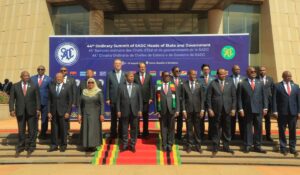Changzhou’s Experience in Developing New Quality Productive Forces
Known as the “Dragon City of China”, Changzhou is situated in the Yangtze River delta, halfway between the two major cities of Shanghai and Nanjing. In 2024, the Year of the Dragon, Changzhou officially joined the ranks of Chinese cities with GDP topping one trillion yuan. It is now known as the “Capital of New Energy.” The city’s progress is a fine example of innovation-driven development and new quality productive forces (NQPF), one of many success stories across the nation that reflect the new development philosophy China is embracing.
Deep roots in industry and commerce
Located by the millennia-old Grand Canal, Changzhou has long been reputed as an “industrial and commercial hub.” It boasts 37 of the country’s 41 industrial categories, more than 60,000 industrial enterprises and an industrial sector worth over two trillion yuan. The solid industrial foundation of “Made in Changzhou” gives the city confidence in opening up a bright new future for manufacturing industry.
Related news
New quality productive forces crucial to China’s economic landscape
Commitment to sci-tech innovation
“Big cities are fine, but smaller towns make life easier,” says Jin Xin. Born and raised in Changzhou, he decided not to work in a first-tier city after graduating from a university in Nanjing, but instead joined Changzhou’s talent recruitment program and found a job in a smart manufacturing lab in his hometown.
More from Africa News 24
Why Warren Buffett-Backed BYD Becomes a “New” Success
A pioneering spirit in a time of change
On the first day of 2024, Li Auto released its sales figures in 2023—376,000 vehicles in total, more than any other domestic electric vehicle (EV) start-ups. In 2016, when Li Xiang, Chairman and CEO of Li Auto, tried to raise money with a three-page PowerPoint prospectus about his EV brand, all he got was rejection. Thanks to Changzhou’s innovative model for attracting business, Li Auto eventually established its manufacturing facilities in the Wujin High-Tech Industrial Zone, making the city one of the pioneers in EV manufacturing.
Even before the emergence of the numerous EV start-ups, Changzhou saw opportunities in the rising EV industry and prioritized core battery in its development strategy. Changzhou now covers 31 of the 32 key links in battery production—97 percent of the whole industry chain, ranking first in China. In 2022, one in every 10 EVs in the world is equipped with battery from Changzhou.
Greater progress through collaboration
In the Yangtze River delta region, an EV factory can source all auto parts within a 4-hour drive—chips and software from Shanghai, die-casting machines from Ningbo of Zhejiang province, and batteries from Changzhou of Jiangsu province. Many auto companies operate within this “4-hour industrial circle,” including Tesla in Shanghai, Nio in Anhui province and Leapmotor in Zhejiang province.
New opportunities for developing NQPF have arrived, and new windows for industrial transformation have opened. Chinese cities are all set to be part of an industrial transformation unfolding across the country, and generate a sustained force for China’s high-quality development.











